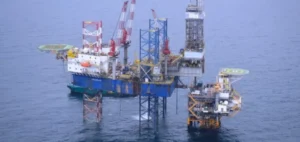The cap on Russian oil prices imposed by the EU, the G7 and Australia has “met its objectives,” according to a report released Thursday by the U.S. Treasury, one of the key topics of the G7 meeting that begins Friday in Japan.
“Despite initial market skepticism…market participants and geopolitical analysts have now recognized that the price cap achieved its two goals” of reducing Russia’s revenues while maintaining stability in the global energy market, the Treasury Department said in the report.
The subject, and, more broadly, that of the sanctions imposed on Russia, will be on the table of the meeting of leaders of the G7 countries (Canada, France, United States, Germany, Italy, Japan, United Kingdom), which opens Friday in Hiroshima, Japan. Russia’s revenue from oil sales fell by 40% in the first quarter, compared to the first quarter of 2022, the Treasury said, citing figures released by the Russian Ministry of Finance. “Russian exports have continued to flow, contributing to the stability of the global oil market,” and “the price of Russian oil has fallen significantly, causing the Kremlin’s revenues to fall,” the report details.
“Before the war, oil revenues made up 30-35% of the total Russian budget,” compared to “only 23%” in 2023 of the Russian budget, the Treasury details. Nevertheless, Russia “exported about 5-10% more crude oil in April 2023 than in March 2022.” According to the International Energy Agency (IEA), Russian oil exports in March reached their highest level in three years, but estimated revenues are 43% lower than a year ago.
Russia manages to redirect its hydrocarbon exports to other countries (China, India, Turkey) but “seems to have some difficulty in finding buyers for its crude and oil products,” the IEA said Tuesday in its monthly report. The 27 countries of the European Union, the G7 and Australia agreed in December on a maximum price of $60 a barrel for crude oil from Russia. In February, a ceiling price was set for Russian oil products.






















